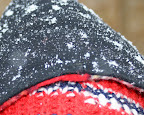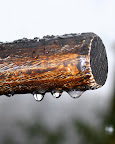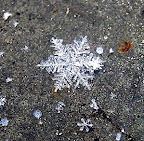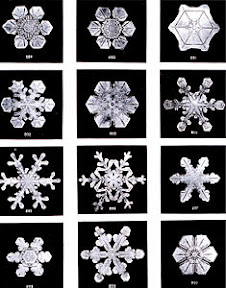So togged up - hooded, buttoned and zipped; out we went, armed with magnifying glasses (all the better to see them with) and some black card on which to catch our flakes.
It was not really quite cold enough for the snow to settle properly, but it rested long enough
on hair

and hat

and even the poor daffodils


for a closer look.
We noticed that it melted fast on the wooden handle of our rocking horse

and much too quickly on tongues for the photographer!
We were able to catch sufficient on our black paper for a proper look, although we found we had to work fast as they melted really quickly on that too.




Back in the classroom, with hands rubbed warm (another lesson perhaps?) we got to thinking about what we had seen. We began by asking ourselves 'What is snow?'
Joe: Snow is water
Chris: It is cold water that froze and turned into snow
Dangi: Snowflakes are formed when water evaporates, goes up and goes really high and then it turns into snowflakes and falls back down again
If you want to find out even more, click on this link.
So snow; what's it like?
'It is light; it disappears when you touch it,' said Patricia. Evie told us (with feeling!) that it is cold. Joe said, with a grin, that you can stick it together.
And then, with our new knowledge of adjectives, we got to describing what we had seen.

'Snow is round' said Umar. 'Star-shaped' noticed Christopher and Sofia. Joe saw flower shapes and Naoya thought he saw triangles. Vaishnavi saw lots of lines and Giulia described the shapes she saw as being like a house. 'Pentagons?' suggested Dangi. Per saw tangled spiders' webs or tentacles; Max was reminded of coconut shreds and Joe of grains of rice.
Next time you are lucky enough to catch a snowflake, why not try and take a closer look. Here are some of the shapes you might be able to see. The photographs below were taken in 1902 (how long ago is that?) by a man called Wilson Bentley:

What words could you use to describe them?
What are some ways in which they are the same?
How are they different?




No comments:
Post a Comment